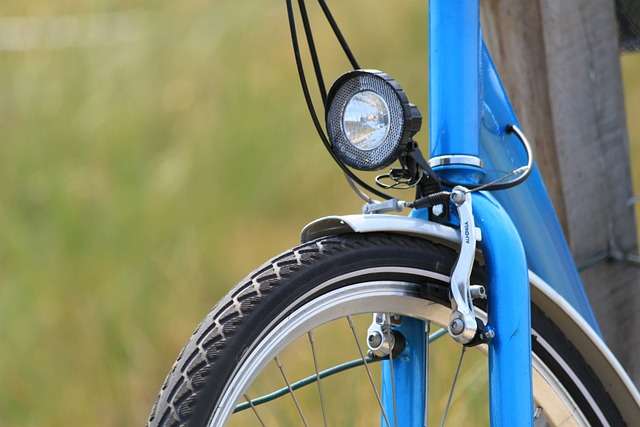
How bicycle brakes work?
Introduction
In the world of cycling, safety is paramount, and the ability to control speed is a fundamental aspect of rider security. At the forefront of this safety mechanism are bicycle brakes, the unsung heroes that transform exhilarating rides into controlled journeys. In this comprehensive exploration, we delve into the intricate workings of bicycle brakes, understanding the diverse types available, their components, and the physics that govern their operation.
1. Types of Bicycle Brakes
1.1. Rim Brakes
The most traditional and widely used type, rim brakes, work by applying friction to the wheel’s rim. The two primary subtypes are caliper brakes and cantilever brakes. Caliper brakes consist of two brake arms with brake pads that squeeze the rim from both sides, while cantilever brakes use a single cable to operate two brake arms.
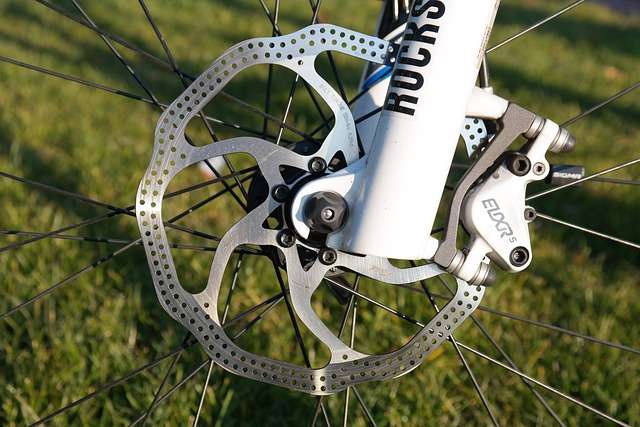
1.2. Disc Brakes
Disc brakes, increasingly popular in modern cycling, employ a rotor mounted on the wheel hub. The braking mechanism involves calipers with brake pads that grip the rotor, creating friction to slow down or stop the bike. Disc brakes are known for their enhanced stopping power and performance in various weather conditions.
1.3. Coaster Brakes
Commonly found on cruiser bikes, coaster brakes are integrated into the rear hub. They engage when the pedals are rotated backward, providing a simple and intuitive braking mechanism. Coaster brakes are often chosen for their ease of use and low maintenance.
2. Components of Bicycle Brakes
2.1. Brake Pads
Brake pads are essential components responsible for creating friction and generating the stopping force. They come in various materials, including rubber compounds and metal, each offering different levels of durability and braking performance.
2.2. Brake Calipers
Calipers house the brake pads and are responsible for squeezing them against the rim or rotor. In rim brakes, calipers are attached to the frame or fork, while disc brakes have fixed or floating calipers depending on the design.
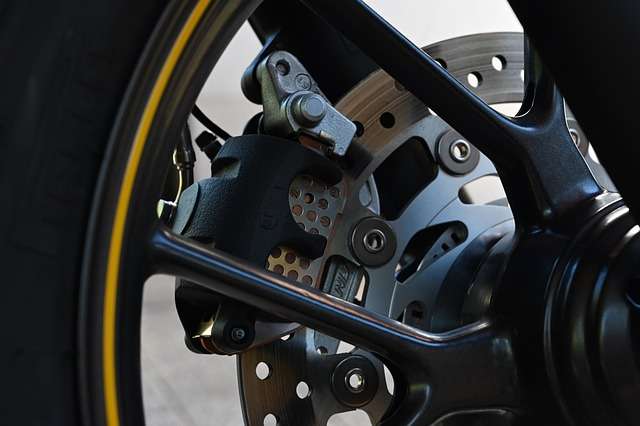
2.3. Brake Levers
The brake levers are the control points for the rider, initiating the braking action. They are connected to the brake mechanism via cables or hydraulic systems, transmitting the rider’s input to the brake calipers.
2.4. Brake Cables or Hydraulic Lines
These components transmit the force applied to the brake levers to the brake calipers. Traditional rim brakes use cables, while disc brakes often utilize hydraulic lines for improved responsiveness.
2.5. Rotors (for Disc Brakes)
Disc brakes feature rotors mounted on the wheel hubs. These rotating discs provide the surface against which the brake pads generate friction, resulting in the deceleration of the bike.
3. Physics of Bicycle Braking
3.1. Friction and Heat Generation
The fundamental principle behind bicycle braking is the generation of friction between the brake pads and the braking surface (rim or rotor). As the pads press against the moving surface, kinetic energy is converted into heat through the process of friction, slowing down the bike.
3.2. Effect of Tire Traction
Tire traction plays a crucial role in the effectiveness of braking. Adequate traction ensures that the brakes can effectively grip the surface, allowing for efficient deceleration. Tire condition, inflation, and the road surface all influence traction.
3.3. Center of Mass and Weight Distribution
The distribution of the rider’s weight and the bike’s center of mass impact braking dynamics. Shifting weight forward during braking can enhance stability and control, preventing the bike from tipping forward.
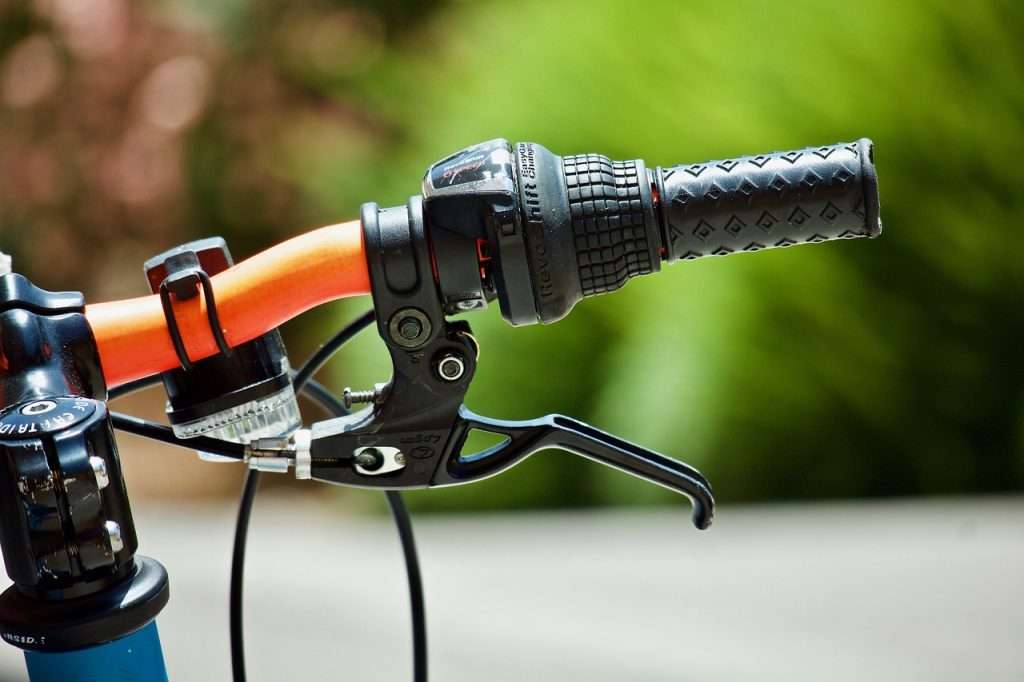
3.4. Braking Force and Stopping Distance
The force applied to the brake levers determines the braking force, affecting the stopping distance. Effective modulation of braking force allows riders to achieve a balance between rapid deceleration and maintaining control.
4. Maintenance and Care of Bicycle Brakes
4.1. Regular Inspection and Adjustment
Routine inspection of brake pads, calipers, and cables is essential for ensuring optimal performance. Adjustments to cable tension or pad alignment may be necessary to maintain consistent braking.
4.2. Brake Pad Replacement
Brake pads wear over time due to the frictional forces involved in braking. Regularly inspecting and replacing worn brake pads is crucial to maintaining reliable stopping power.
4.3. Cleaning and Lubrication
Keeping the braking components clean and lubricated contributes to smoother operation. However, it’s important to use appropriate lubricants to prevent contamination of the braking surfaces.
4.4. Bleeding Hydraulic Systems
For bicycles equipped with hydraulic disc brakes, periodic bleeding of the hydraulic system is necessary to remove air bubbles and maintain optimal fluid performance. This process ensures consistent braking feel.
5. Choosing the Right Brakes for Your Ride
5.1. Consideration of Riding Style
The choice between rim brakes and disc brakes often depends on the rider’s style and preferences. Disc brakes are favored for their superior stopping power, making them suitable for mountain biking and other high-performance applications.
5.2. Weather Conditions
Disc brakes perform more consistently in wet or muddy conditions compared to rim brakes, which may experience reduced effectiveness due to water and debris on the rim surface.
5.3. Ease of Maintenance
Rim brakes are generally simpler to maintain and repair, making them a preferred choice for riders who prioritize ease of maintenance.
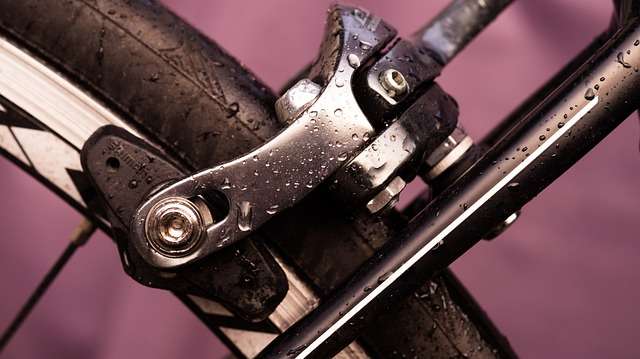
5.4. Budget Considerations
While disc brakes offer advanced features, they often come with a higher price tag. Rim brakes, being more traditional and straightforward, are often more budget-friendly.
Conclusion:
Bicycle brakes are not merely components that bring a cyclist to a halt; they are intricate systems that encapsulate physics, engineering, and rider dynamics. Understanding the types of brakes, their components, and the principles governing their operation empowers cyclists to make informed choices, ensuring a safer and more enjoyable riding experience. As technology continues to advance, we can anticipate further innovations in braking systems, contributing to enhanced safety and performance for cyclists of all levels. Whether cruising on a classic coaster brake or hurtling down a mountainside with hydraulic disc brakes, the world of bicycle brakes invites riders to explore the science and artistry of controlled deceleration.

